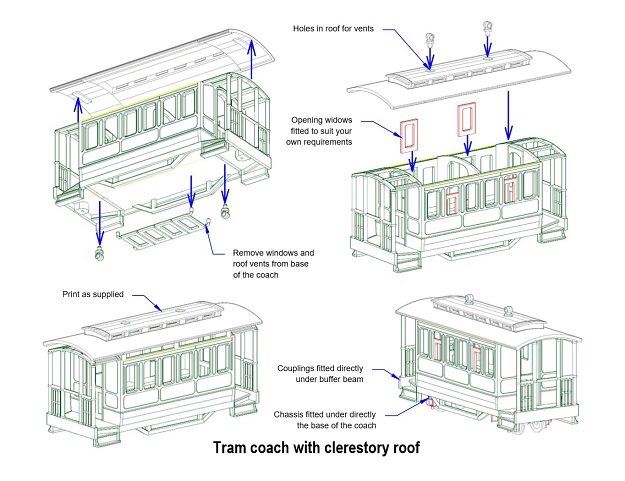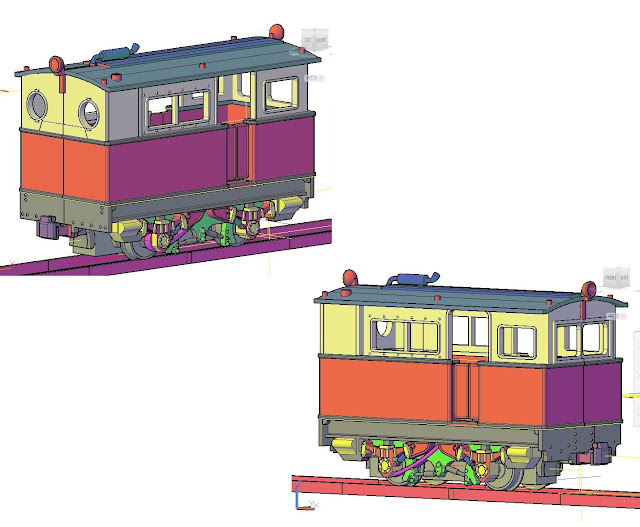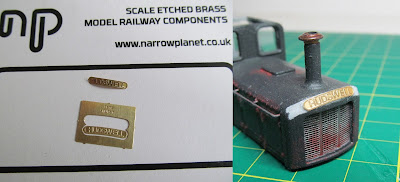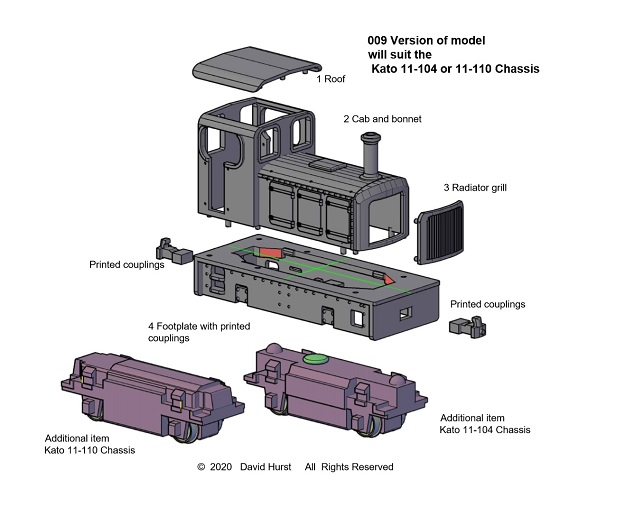Additional notes added August
2019
 |
| © 2017 David Hurst All Rights Reserved |
This is a small tram-style coach based on the Clogher Valley
Railways coaches but without the clerestory roof.
The original Clogher Valley coaches were built in 1886 by
The Metropolitan Railway Carriage and Wagon Co of Birmingham. There were 13
passenger coaches in total, numbers 7-9 bogie 1st class which were shorter
than the others, 10 & 11 bogie 1st / 3rd composite,
12 – 19 bogie 3rd. All the coaches had balconies at each end, which
supported the overhanging clerestory style roof. Communication between each
coach was possible across metal fall-plates which covered the buffer-couplings.
The carriages were innovative in using exhaust steam to provide heat to their passengers,
at a time when the best most people could expect in winter was a warming pan.
The coaches remained in service till the lines closure on New Year’s Day
1942.
| © 2017 David Hurst All Rights Reserved |
The print configuration in two halves cuts down the amount
of support material by a considerable amount and therefore the cost. It still
allows for the fitting of internal details and glazing before the coach is
assembled. It is also much easier to add details such as the etched mesh to the
balcony end frames from the inside before they are added to the main coachwork.
Because of the detailed panel-work on these coaches they are
only available to print in Frosted Ultra Detail, this does mean that the
balcony end frames are quite delicate and I have found that they may warp in
transit. Fixing them into position on the model does push them back into their
correct shape, but be gentle as this is done.
| © 2017 David Hurst All Rights Reserved |
| © 2017 David Hurst All Rights Reserved |
I decided to use a pair of Kato 11-099 bogies on this coach
as they have an offset pivot, are small well engineered and have a free running
wheel sets. The offset pivot on the bogie was particularly useful as it allowed
the pivot on the floor of the coach to be close to the balcony steps without
the bogie being restricted by them. This does mean that they are the wrong way
round, the couplings facing inward, and should be removed. I felt that this
would not be of any detriment as the coach itself is short, and normal fixed coupling
should cope on restricted curves. I did find that the pivot formed by the
printer can vary in the thickness. This stops the free movement of the bogie
from side to side. I used a small flat file to dress off some access material
at the base of the pivot on the coach, which will allow the pivot clips on the
bogie to engage on the inside of the pivot hole on the bottom of the coach and
allow it to turn freely.
My choice of finish was a Revel oil based paint ref SM 331
thinned slightly and I applied two coats of this to the sides, ends and the
balcony ends. The frames and steps had a coat of dark grey Revel mat 9, the
fall plates were a mix of the matt 9 and a silver to create a dark gunmetal
finish. A wood colour mix was used on the balcony floors, and on the roof I
used a Revel light grey matt 43 and white 5 mix. I left the inside of the coach
in the light grey primer finish as this is pretty neutral.
 |
| © 2017 David Hurst All Rights Reserved |
After the painting was completed, the glazing could be added
with a sheet of clear acetate cut to suit the side windows, then glued in place
with Cyanoacrylate glue (super glue). I found it simplest to position the
glazing panels and then drop some glue on the edges, this would then run under
the acetate and fix it in place. Apply a little light pressure while the glue
is going off.
 |
| © 2017 David Hurst All Rights Reserved |
When you are assembling the coach the central roof joint
will be the most obvious and this can be tackled in a few ways. One is to fill
the joint after fixing the coach together and painting over the joint. Another
method is to use a single lamination of toilet tissue paper to represent a felt
roof covering: fill the roof joint, apply glue over the whole roof, then add the
paper from the centre line letting the glue soak in as it is applied. Once the
result has dried this can be painted, possibly in a dark grey to mimic the felt
colour. The two roof ventilators are then added and finished in with the roof
colouring.
Numbers were added
to each side of this particular coach. The central panel was used to display
the number 10, the three panels under the windows being a good area to display
numbering or lettering. Any style of around 1 to 2mm size will look fine. I used the Fox Transfers FG1003 -
Alphabet in white - Franklin Heavy, 2mm & 1mm which give a nice bold graphic.
 |
| © 2017 David Hurst All Rights Reserved |
Once fully assembled – couplings added, glazing and painting
fully completed- a coat of thinned matt or satin varnish was applied to all
painted areas of the model. This helps to fix the transfers and pull the whole
finish together. It is a bit of a personal choice, but I do like to add a
measure of weathering to the final model. It removes that out- of- the box
look. To do this I use artist’s oil pastels which have been made into a powder
form. Black, burnt senna (earth/mid brown), light red and orange are the main
colour pallet that I use. It is also
quite easy to mix these to create other shades. They are dusted on the model
with a number 6 size paint brush that is kept specifically for this job. If you
don’t like what you have done it can be cleaned off again, which is what I like
about using oil pastel dust to do the weathering.
 |
| © 2017 David Hurst All Rights Reserved |
 |
| © 2017 David Hurst All Rights Reserved |
If you would like a copy of this model visit Model Engine Works at:
Additional notes added August
2019
Further variants of this style
of coach are available from the Model Engine Works Shop on Shapeways. Both are
slightly smaller and more economical to build. One comes with a clerestory
roof like the original Clogher Valley coaches. The other has no roof printed,
allowing you to supply your own. They both have window openers which can be
positioned as you require. Roof vents are also supplied to add the finishing
touch to the roof.
 |
© 2019 David
Hurst All Rights Reserved
|
 |
© 2019 David
Hurst All Rights Reserved
|
Further items will be need to complete the models, these
include wagon chassis such as the Peco N" gauge chassis kits (Ref
NR122 0r NR123) from Dundas Models. A set of couplings and acetate or clear
Plasticard for glazing the windows.
 |
© 2019 David
Hurst All Rights Reserved
|
If you would like a copy of this model visit Model Engine Works at:





























